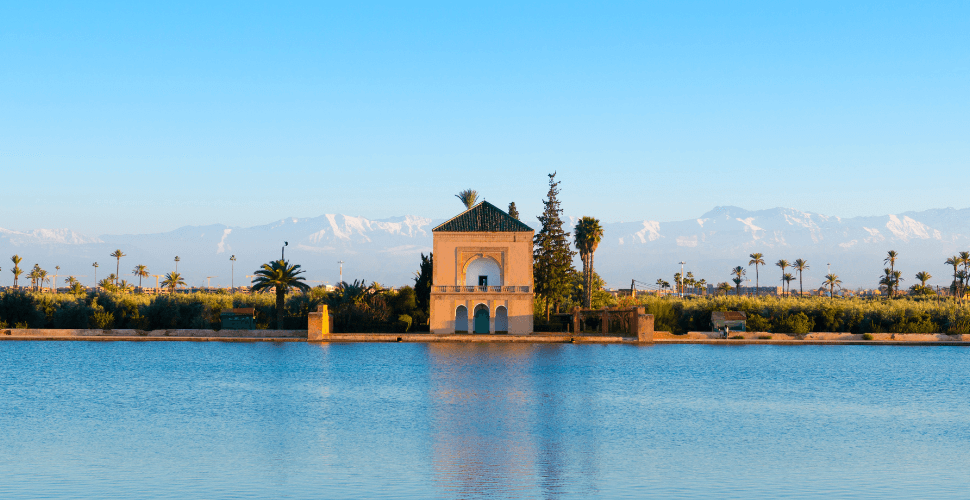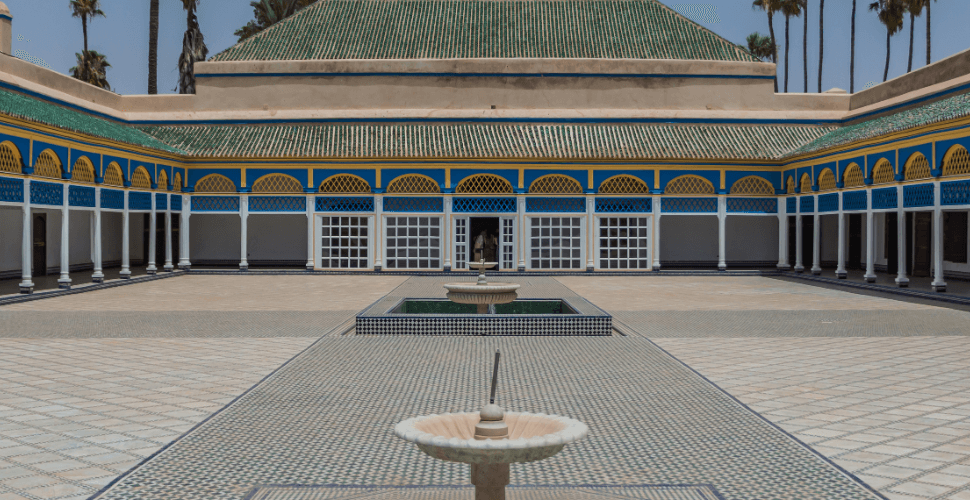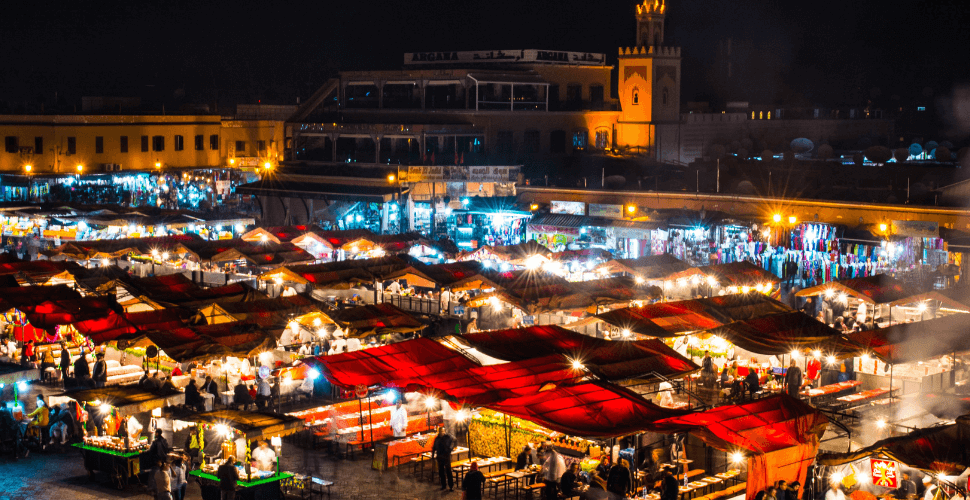Palais El-Badi is a remarkable example of Moroccan and Islamic architecture. The palace was built in the late 16th century during the reign of Sultan Ahmad al-Mansur, using traditional materials such as mud bricks, sandstone, and marble. The design reflects the influence of both Moroccan and Andalusian styles.
The palace’s exterior features intricate carvings and decorative tile work known as zellij. Inside, visitors can admire beautiful courtyards with fountains surrounded by colonnades that provide shade from the sun. The grand reception hall or Saadian Hall showcases magnificent cedar woodwork on its walls and ceiling.
One unique feature of Palais El-Badi is its use of light throughout the building. Light enters through carefully placed openings in walls to create dramatic effects on interior spaces. This technique is particularly evident in the underground chambers where shafts of light illuminate pools that were once used for bathing or cooling off during hot summer months.

The Features of Palais El-Badi: Pools, Pavilions, and Gardens

The pools of Palais El-Badi are among its most impressive features. The largest pool, measuring 110 meters long and 70 meters wide, was once filled with water from the Ourika River and used for naval battles during festivities. Today, it is dry but still a stunning sight to behold. The smaller pool nearby was reserved for private use by the sultan and his harem.
Pavilions were an integral part of Moroccan palaces, providing shelter from the sun while also serving as meeting places for officials and dignitaries. At Palais El-Badi, there are several pavilions scattered throughout the gardens that offer visitors a glimpse into royal life in centuries past. One of these is the Chamber of Twelve Pillars which served as a reception hall for foreign ambassadors.
The gardens at Palais El-Badi are a testament to Morocco’s love affair with nature. With orange trees lining walkways and fragrant flowers blooming everywhere you look, it’s easy to see why this palace was such an important retreat for its inhabitants. The garden also contains several fountains that once provided water for drinking as well as irrigation purposes.
The Legends of Palais El-Badi: Treasures, Secrets, and Curses
Legends surround Palais El-Badi, adding to its mystique and allure. One of the most popular tales is that of a hidden treasure buried somewhere within the palace’s walls. Many have searched for it over the years, but none have been successful in finding it. Some believe that a curse has been placed on those who try to uncover the treasure, causing them misfortune or even death.
Another legend tells of secret passageways and rooms within the palace that are only accessible to those with knowledge of their existence. It is said that these rooms contain valuable treasures and artifacts from Morocco’s rich history. However, due to their secrecy, no one knows for sure what lies behind these hidden doors.
Perhaps the most intriguing legend surrounding Palais El-Badi is that of its former owner, Sultan Ahmed al-Mansur. According to local folklore, he was known for his love of luxury and extravagance. It is said that upon his deathbed, he cursed anyone who dared disturb his resting place by digging up his tomb or attempting to steal any of his possessions from within the palace walls. This curse has led many to believe that there may be more secrets yet undiscovered at Palais El-Badi.

The Decline of Palais El-Badi: Wars, Plunders, and Abandonment

The decline of Palais El-Badi began in the late 17th century when Moulay Ismail, the sultan of Morocco, took most of its precious materials to build his own palace. The once magnificent building was stripped off its elaborate decorations and furnishings. It lost much of its splendor and became a shadow of what it used to be.
In the early 18th century, Palais El-Badi suffered further damages during a civil war that ravaged Marrakech. Rebel forces occupied the palace for several months and caused significant destruction to its structures. Afterward, it was abandoned and left neglected for centuries.
During the French occupation in Morocco in 1912-1956, Palais El-Badi served as a military base for French troops. The soldiers used parts of the palace as stables and warehouses which eventually led to more damage on top of what has already been done before them. When they withdrew from Morocco after independence was gained by Moroccans from France in 1956; they left behind an empty shell that had lost all traces of grandeur it once held centuries ago.
The Rediscovery of Palais El-Badi: Excavations, Restorations, and Museums
Archaeological excavations of Palais El-Badi began in the 20th century, revealing a complex network of underground passages and rooms. These discoveries have shed new light on the palace’s history and confirmed its former grandeur. The restoration process has been ongoing since then, with many of the original structures being rebuilt to their former glory.
One notable addition is the Musee de Marrakech, which was built within one of the palace’s courtyards. This museum houses a collection of contemporary Moroccan art as well as historical artifacts from Palais El-Badi itself. Visitors can explore both the restored sections of the palace and view these exhibits all in one visit.
The restoration process has also allowed for new gardens to be planted within Palais El-Badi’s walls, adding to its already impressive beauty. Today, visitors can stroll through lush greenery while admiring stunning architectural features such as ornate arches and intricate tile work. It is truly a testament to Morocco’s rich cultural heritage that this once-abandoned site has been given new life through careful excavation and restoration efforts.

Unleash the Adventure: Discover Our Excursions
Please note that every route listed on our website is simply a starting point. At our company, we believe in fully customizing every aspect of your trip to meet your specific timing, budget, and preferences. We offer complete flexibility to extend, adjust, shorten, add or even skip stops and towns within a reasonable frame.
Our team of experts will work with you to recommend the best routes and schedules that cater to your interests and create an efficient yet comfortable itinerary. Trust us to take care of all the details, so you can sit back, relax and enjoy your personalized travel experience.










